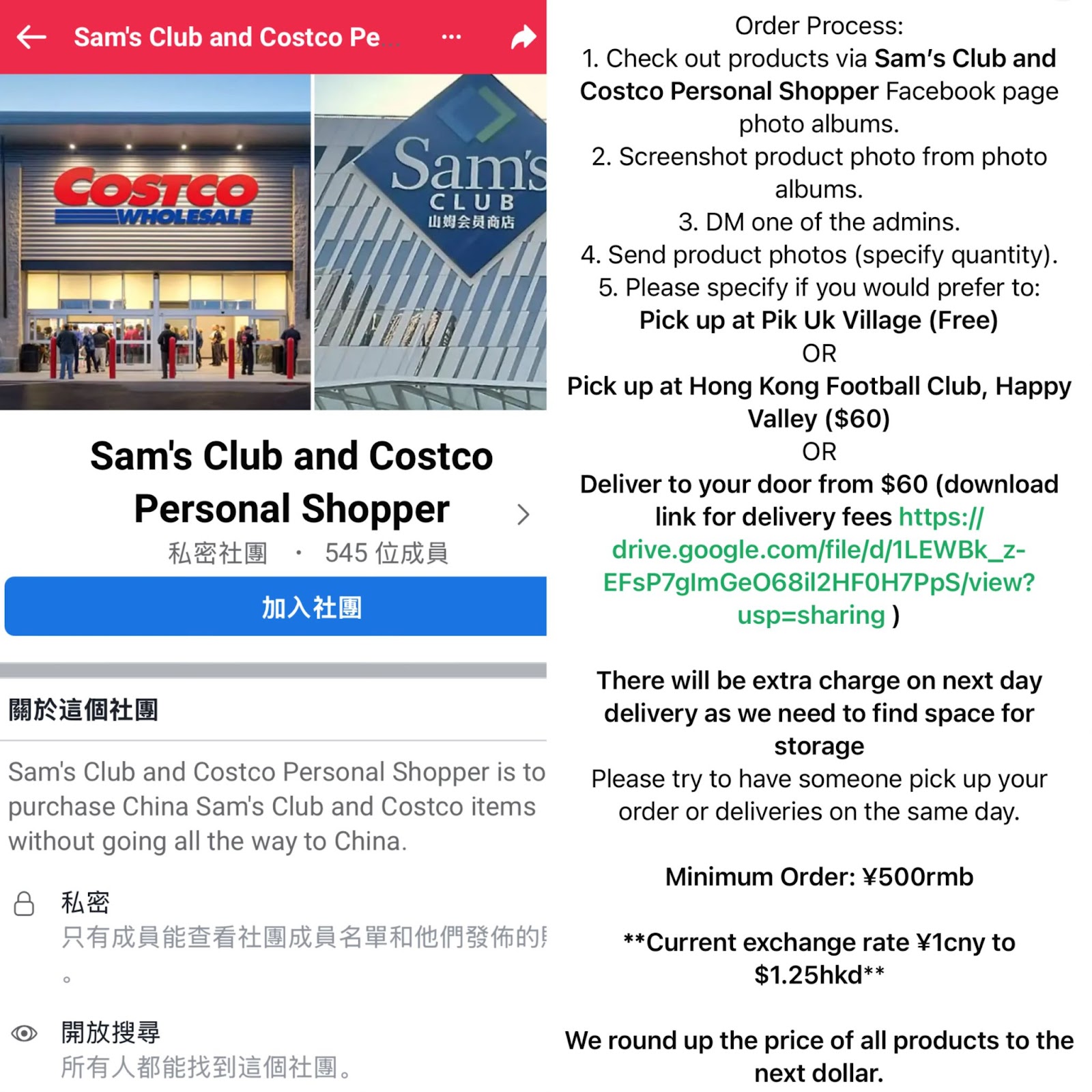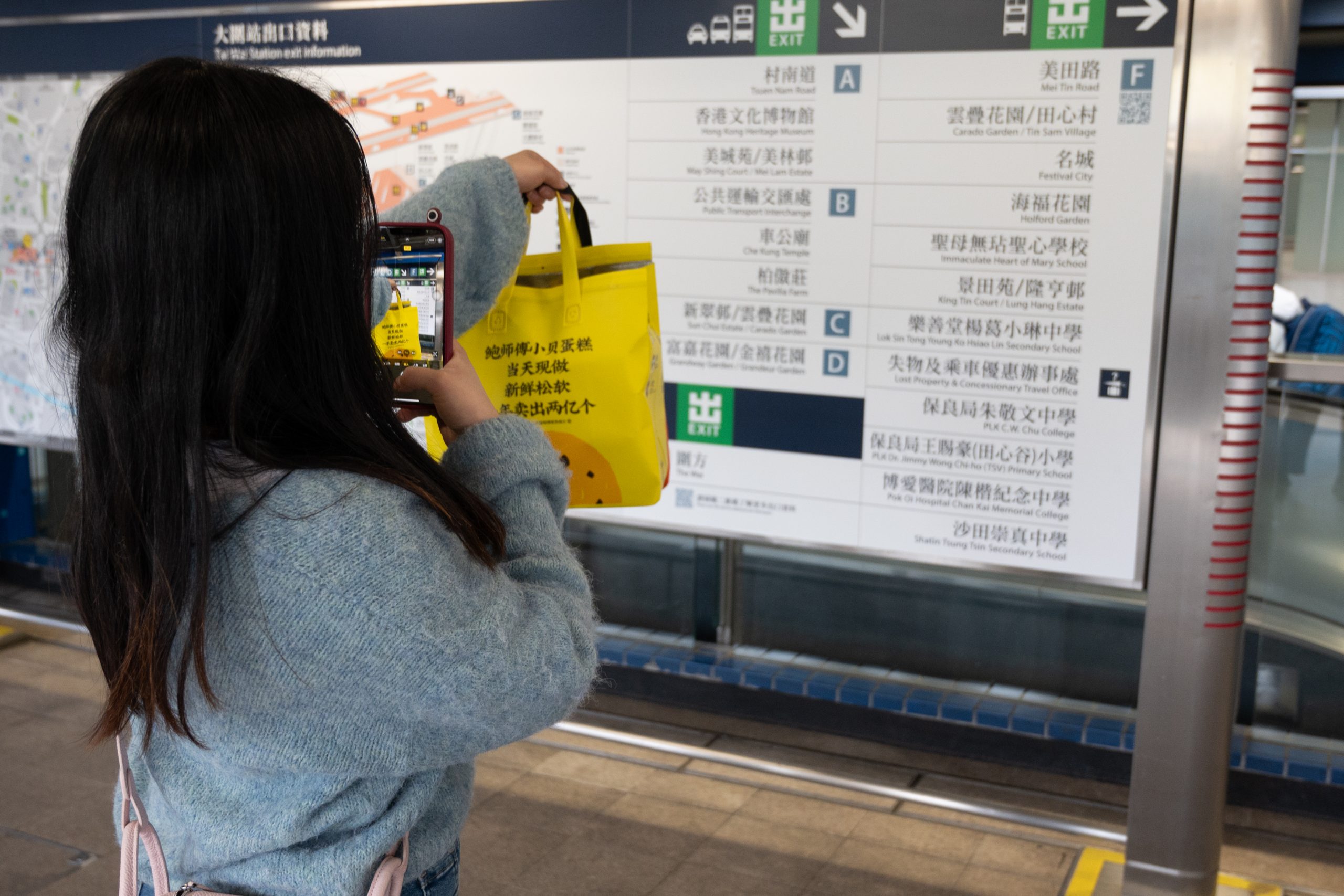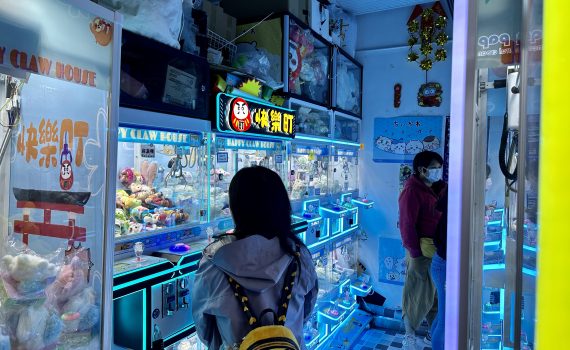Holding bags of pastries from the well-known mainland bakery brand, Bao Shi Fu, 32-year-old housewife Li Lanlan, a Shenzhen resident, starts her daily routine. She prepares to deliver goods from Shenzhen to Hong Kong, ordered by Hong Kong customers, at Futian Port.

“Daigou” are personal shoppers who take orders directly from customers, make the purchases for them and deliver the goods to them, all for a commission fee.
Li started her daigou business right after the Lunar New Year, and is already getting a steady stream of orders, usually three to four orders a day.
“As a housewife, I can only schedule one trip to Hong Kong each day to earn some pocket money,” Li said.
A few years ago, daigous mainly purchased high-end goods such as milk powder in Hong Kong and brought them to the mainland. As consumption habits change, the trend is reserving. Nowadays, many daigous takes orders through social media, many of them delivering food or daily necessities directly from Shenzhen to Hong Kong.
Hong Kong Immigration Department figures show that more than 81 million headcounts made the crossing between Shenzhen and Hong Kong last year.
“As more people went to Shenzhen to spend their money, some people found it profitable to help deliver goods via ports, and there are plenty of accounts on RedNote doing reverse daigou,” said Li.

People use social media platforms like RedNote and Facebook to find agents and place orders. These agents deliver the shopping to Hong Kong at agreed-upon MTR stations.

Li usually earns around HK$200 to HK$300 a day.
“If the client requires home delivery, I will charge HK$600 to HK$1000 for a single errand, depending on the distance,” said Li.
"Some customers are quite generous with the delivery fees, especially for home delivery services. I once had a customer from Hong Kong Island who paid me HK$500 as a delivery fee for goods worth about HK$400,“ Li said.
“But some customers might only offer HK$10 for a delivery that wouldn't even cover my transportation costs,” she said.

“The most common clients of the reverse daigou trend are mainland students who study in universities in Hong Kong,” said Penny Du, a 28-year-old student, who started her daigou business two years ago with her boyfriend. This side business provides them a stable monthly income of HK$10,000.
Besides the lower prices in Shenzhen, Du said convenience is the main reason why students choose daigou services. “When they are sick, but they are unfamiliar with Hong Kong medications and they are more accustomed to ordering from mainland delivery platforms, they will ask me to help,” she said.
“When they have high coursework demand, the time cost of travelling back and forth to Shenzhen becomes significant,” said Du. “Therefore, daigou services become an option for people who need goods from Shenzhen.”
Dong Ding, an economics professor at Hong Kong Baptist University who also commutes daily between Hong Kong and Shenzhen, said the product categories favoured are different in reverse daigou.
In the past, luxury goods, cosmetics and fashion items were the usual daigou items, but now it’s mainly food and groceries in Shenzhen.
“It is not necessarily about the lower prices. People are more interested in the variety of food available, such as different types of bread that can be found in Shenzhen,” said Dong.
On January 21, the Hong Kong Immigration Department arrested eight mainland residents suspected of providing reverse daigou services. In addition to the stricter control policies by the Immigration Department since early November 2024, major mainland e-commerce platforms have introduced free shipping policies for Hong Kong. Taobao now offers free shipping on orders over 99 yuan, thereby offering more choices for residents in Hong Kong.
“Cross-border e-commerce platforms and reverse daigou services are alternative solutions for delivering the same consumer goods, however this does not mean that they are interchangeable in all situations,” said Dong.
Compared to reverse daigou, e-commerce platforms provide opportunities for low-cost trials. For example, if someone wants to try Hunan cuisine for the first time, they can order a seasoning pack on Taobao. But when Taobao cannot meet their needs and they want to experience more authentic food, they might choose to go to Shenzhen to taste it or seek reverse daigou services.
"This makes the market more interconnected as development continues, everyone will find more precise preferences and naturally pursue different channels accordingly," Dong said.
Except for the increased cost-effectiveness brought by e-commerce platforms, popular daigou products among Hong Kong residents, such as "Tai Er Sichuan Sauerkraut Fish," "Muwu BBQ" and "HeyTea," have also gradually opened stores in Hong Kong.
Du believes that this phenomenon will not affect Hong Kong residents' willingness to use reverse daigou services. "Consumers who choose reverse daigou are inherently pursuing a high cost-performance lifestyle," she said.
As the trend of reverse daigou continues to pick up, some people ask Li if they could pay her to learn how to be a daigou. “If someone asks, I am happy to share how to do it, but I won't charge them for it,” she said.
Changes in consumer patterns also bring new business opportunities. Dong said the rise in demand may bring about legitimate solutions.
"This doesn't necessarily mean that the platforms will engage in reverse daigou. Instead, they can connect Shenzhen merchants or suppliers directly with Hong Kong consumers in a business-to-customer format, which may be the business model of the future," he said.
《The Young Reporter》
The Young Reporter (TYR) started as a newspaper in 1969. Today, it is published across multiple media platforms and updated constantly to bring the latest news and analyses to its readers.

The cost of bidding farewell to pets

Economic downturn fuels claw machine entrepreneurship




Comments